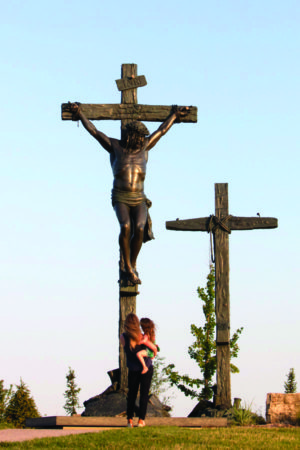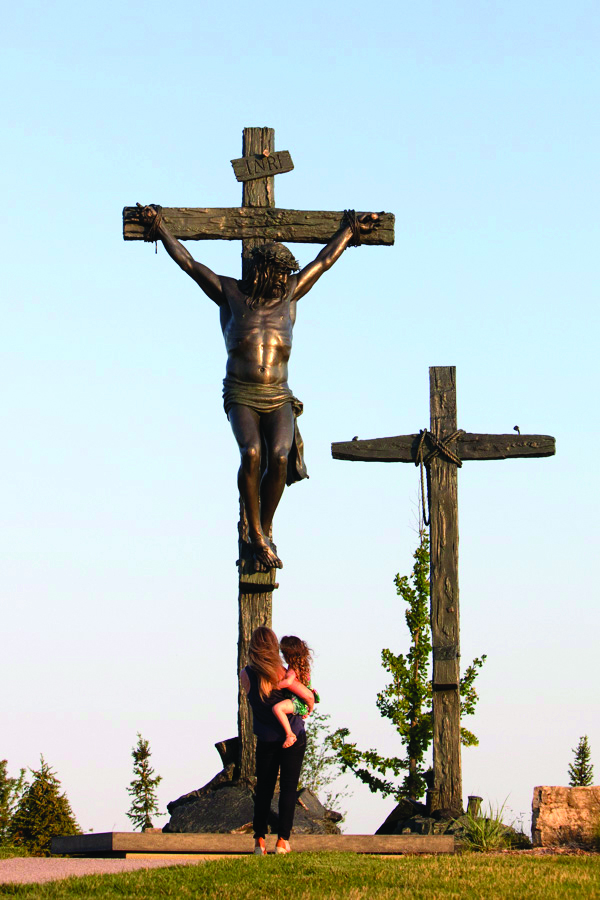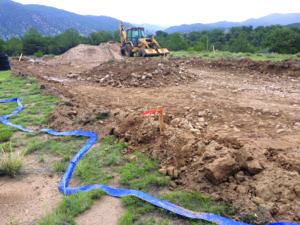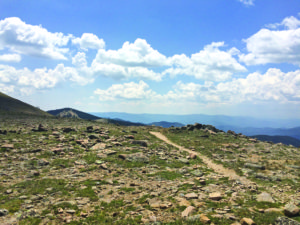By Kenneth Jessen
Located in Colorado’s San Luis Valley, Jaroso resident Lynn Kircher and his wife Jane managed one of the largest, most complex sculpture projects in the United States. It consists of 14 larger-than-life Stations of the Cross, now installed at Cloisters on the Platte between Lincoln and Omaha, Nebraska. In 2015, Kircher was contacted by former TD Ameritrade founder, CEO and board chairman Joe Ricketts about this ambitious project.
Ricketts was in the process of planning Cloisters on the Platte as a religious retreat. The site he selected for Stations of the Cross is a section of forested rolling hills with connecting walkways that approximate the same distance Christ took in Jerusalem. It is one of the first sites visitors see when entering the retreat complex. With forested hillsides and a small stream, it is an inviting and meditative environment. The campus also includes a chapel and a number of lodges. The main complex includes a library, meeting rooms, chapel, personal spaces and a common dining area. Public viewing of the sculptures is available Monday through Wednesday, 8 a.m. to 6 p.m. and on Thursdays from 8 a.m. to 1 p.m. A $10 donation is suggested, and visitors will get a pair of earphones for an audio narrative.

Kircher put together a team of nine other noted artists to complete the project with an installation date of June, 2018. Initially, the project was projected to include 40 to 45 figures. As the design progressed and 1/12 scale macquettes were made, it became clear that additional figures would complete the story. The Stations of the Cross grew to around 60 figures all supported on complex bases.
To add to the complexity of Lynn and Jane Kircher’s job as artist liaisons, a new technology had to be used to stay on the aggressive schedule. This involved scanning the final half-size sculptures and enlarging them digitally. After each station was digitally divided into multiple manageable sizes for casting, 3D printing was used to create the full-size pieces.
The project was of such a size that there were artists and foundries in different parts of the western United States. Once sculpting was complete, nine foundries cast the bronze, welded the pieces together and finished them, including the Lundeen studio in Loveland, Colorado.
At the foundries, by successive dipping in slurry, a ceramic shell was built in layers. During the high heat process used for fusing the shell, the printed material burned out. This skipped a number of traditional steps used in the lost wax process.
[InContentAdTwo]
All of this involved a considerable amount of travel for the Kirchers to supervise not only the artists, but the process at the foundries. Part of the project was creating a time line for each step, as well as monitoring the schedule for Mr. Ricketts. Adding to the project was the application of the patina to create continuity between each station. Then there was delivery and installation at the site.
With so many artists participating in the project, each with their own distinctive style, telling the story in a consistent manner became one of the key objectives. First of all, Kircher started with a large pool of candidates, and then carefully selected those he knew would work toward a common goal. The kickoff for the project began in the spring of 2015 with a retreat at the Stanley Hotel in Estes Park, Colorado, so that all of the artists could understand the story, its various depictions and share a common vision.
The Kirchers were not just artist liaisons. Lynn Kircher sculpted Stations 12 and 14, plus the Risen Christ in front of the chapel. He narrated a video with the help of Annalise Lundeen, set to music with biblical references, to introduce the project to the client.
The small community of Jaroso was founded in 1910 as the southern-most point reached by the San Luis Southern Railway, in its failed attempt to continue south to Santa Fe. Jaroso got its own post office, and with rail service, it grew to become an agricultural trade center. The Dust Bowl, the Great Depression and sustained droughts limited the town’s potential, and the railroad was dismantled. Jaroso could very well have become one of the 1,600 or so Colorado ghost towns.
In 1997, Lynn Kircher left his teaching job at the Colorado Institute of Art in Denver to pursue a full time career as a sculptor. In 1986, the couple had purchased the old Jaroso bank and the Costilla Land & Development Company office. Later they purchased the old Jaroso Hotel where they reside. They ended up owning a fair share of the town and went about restoring the buildings, bringing Jaroso back to life. Other artists purchased most of the buildings on one side of the road.
Kircher reflects back on his first work of art at the age of five or six when he was growing up in Illinois. From a humble background, his family lived in a row house, and in sparse surroundings, Kircher decorated the wall of his room with crayon drawings – but not with his parent’s permission! Despite his impromptu artwork, his family supported his desire to become an artist.
Kircher recalls his first sale while living in a suburb of St. Louis working as a shoeshine boy in a barbershop. For the barbershop owner, he did a large four-foot by eight-foot mural of a fisherman in Colorado’s high country. He was paid $75 and given all of the supplies he needed. After the barber retired, he took Kircher’s mural with him to hang in his basement.
At age 15, while looking inside a matchbook cover, Kircher saw a drawing of a pirate with an invitation to “draw me” and sent it to the Minneapolis School of Art. He won a full scholarship. After a tour in Vietnam, he attended the Colorado Institute of Art. He became the arts and crafts coordinator for the City of Lakewood in 1974, serving in this position for four years. In 1978, he applied for a faculty position at the Colorado Institute of Art where he taught for nineteen years. At the same time, Kircher started a studio he maintains today.
A lifelong Catholic, it was logical for Kircher to turn toward sculptures with a religious theme. His first liturgical commission was in 1990 for his parents’ parish, St. Bernard Church in Bella Vista, Arkansas. This was followed by many more commissions for 65 churches in 14 states and three other countries. In 1995, he was inducted into the Colorado Institute of Art Hall of Fame.
As a young man, “I dreamed of having a piece at the Vatican,” says Kircher. His dream came true in 2002, when Pope John Paul II accepted “At Peace,” an anguished bust of Christ with arms outstretched, for the Vatican collection.
As far as his style, it is highly representational, and in Kircher’s words, “Humanity has always been a part of my search as an artist – and as a teacher.” For more of Kircher’s work, go to www.kircherstudios.com
Ken Jessen is always on the outlook for something interesting including sculptors and their creative projects.



